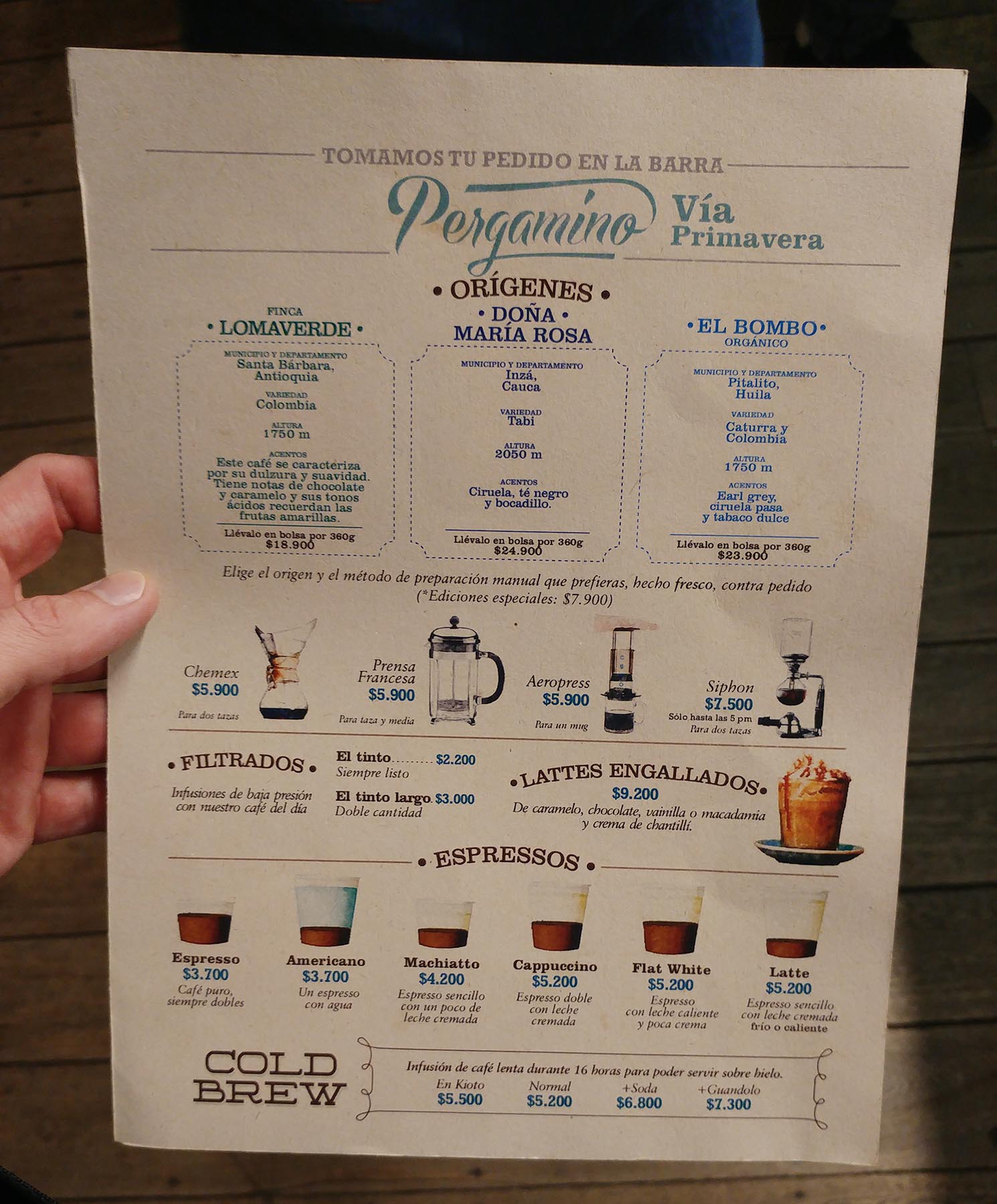I talked about this in my previous post where I mentioned an excellent local cafe, Cafe Pergamino, but I’d like to delve into a bit more detail. Colombian coffee has a good reputation, and for good reason, but it seems to have been overshadowed in recent years by a mountain of other varieties and roasts. This is a shame because it is still absolutely world class. Yes, I’ve had peaberry Kona and quality Jamaica Blue Mountain, both brewed properly in a French press. Good Colombian coffee prepared correctly is right up there with them.
Why?
Ok, there are two reasons the coffee here is so good, and when I say “coffee” I don’t mean the beans in this instance but the final brewed product.
- The coffee (beans) are excellent. I’m not a coffee expert, I couldn’t tell you why. Some combination of climate and soil I imagine, coupled of course with people who, through centuries now of experience, know how to cultivate it properly.
- They know how to prepare it correctly. They brew it as soon after roasting as possible and they grind it immediately before brewing. They also offer a variety of preparation methods which are all far superior to the typical American automatic-drip machine. Have a look at the menu below from one of my favorite local cafes here in Parque Lleras, Medellin.
The above is a menu from Cafe Pergamino. They’re not exceptional in this, other cafes I’ve been to throughout Colombia have offered the same methods of preparation, all with high-quality Colombian coffee beans. They offer three varieties of coffee, all from Colombia, all excellent in my opinion. What I’d really like you to focus on are the different methods of preparation offered: french press, chemex, aeropress, and siphon.
They give you four different options of preparation, all different and yielding a different drink (with the same coffee) that emphasizes different characteristics of the coffee. I personally prefer Chemex as it greatly reduces the acidity and completely eliminates any grinds from the cup.
If you’re interested in trying some excellent Colombian coffee, Cafe Pergamino will ship to the U.S. (I’ve no idea about Canada/Europe/etc., I just know that I noticed a sign there one day saying that they now ship to the U.S.).
There are no driers in Colombia
Because of the climate very few people here have driers. They just use clotheslines. I’ve found this to be perfectly adequate, usually leaving your clothes dry within approximately twenty-four hours, though here and now in Medellin during the rainy season when it’s very humid, it can be more like two days…still not that bad.
The Colombians do have to import some fruits, yes…
Apples. They fucking love apples. It’s a combination of everyone likes apples, they’re good, yes, but also a bit of that “grass is always greener” appeal, that because apples are a foreign delicacy of sorts, and therefore of course more expensive that the local mangos, guanabana, and bananas, they have a bit of an elevated status.
It’s not just apples, either, though that does seem to be the most common example. They also have to import similar fruits that only grow in more temperate climates, like peaches, plums, and pears.
I hope that was interesting, let me know what you think in the comments.
Cheers,
Andrew


Recent Comments